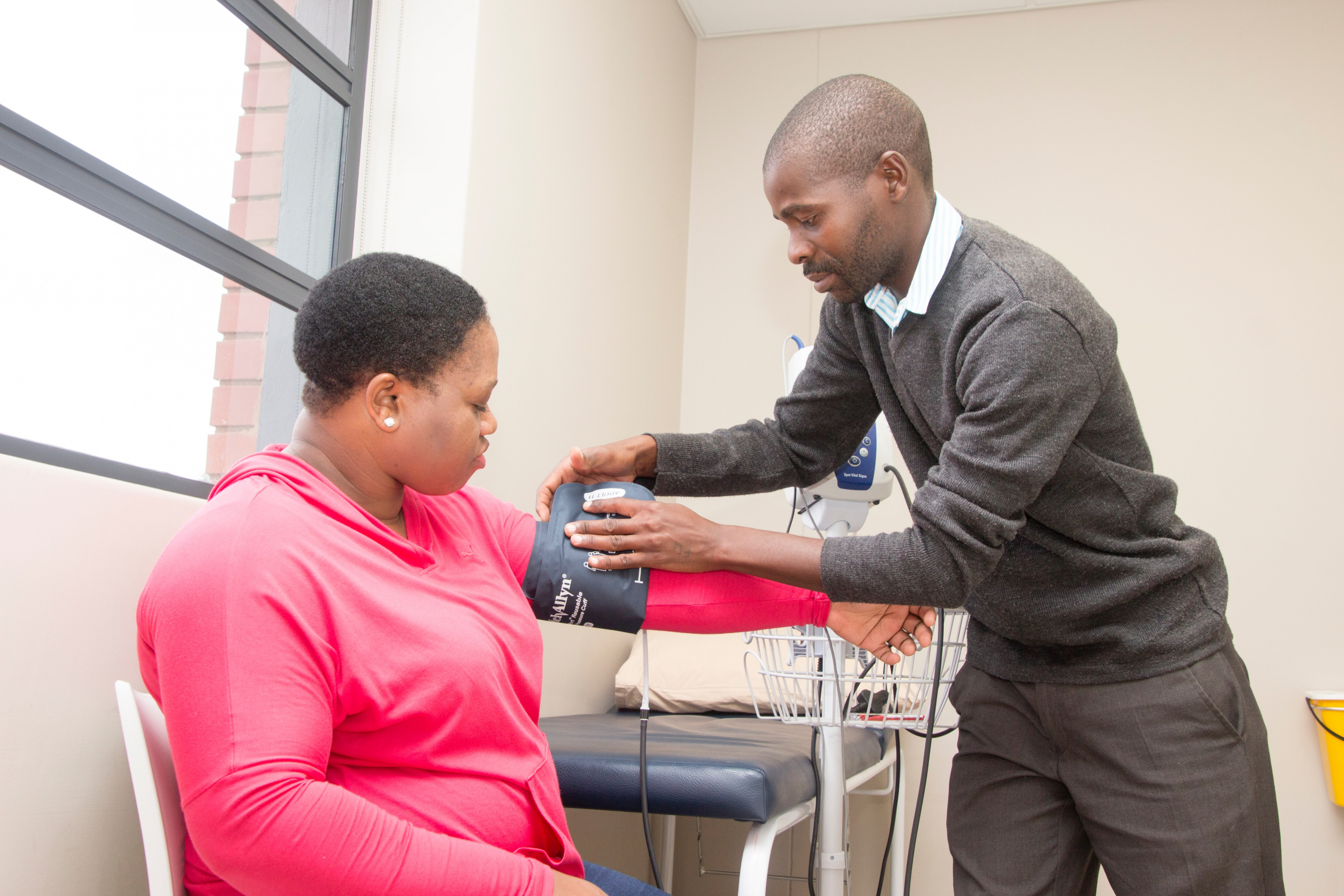Regular physical activity consistently leads to reductions in systolic blood pressure of 2-7 mmHg, which typically translates into a reduction in cardiovascular disease risk of ~20-30%.(1) Furthermore, greater reductions in blood pressure following exercise training are often observed in those with higher blood pressure at baseline. Therefore, individuals of a higher hypertensive status (mild, moderate, severe) stand to benefit the most from regular physical activity.(1)
Pre-exercise screening practices are essential in hypertensive patients, to identify any potential risk factors that increase the likelihood of an exercise-induced adverse event. Possible risk factors include obesity and diabetes, cardiac-related difficulties, musculoskeletal injuries, and others. In general, exercise training should always be prescribed with the approval of the patient’s health care provider, or an exercise referral specialist. Furthermore, each aspect of exercise program design should be tailored to the individual needs of each patient, and their specific clinical condition. As such, it may also be prudent to implement more rigorous monitoring practices with hypertensive patients.
Acute monitoring practices (within-session) should track the patient’s immediate physiological response (heart rate, RPE Borg scale, etc) to exercise training. Furthermore, chronic monitoring practices (every 1-2 weeks), should determine whether the desired reduction in resting blood pressure is being achieved.
Exercise recommendations
Exercise training in hypertensive patients can then be broadly prescribed according to the FITT (frequency, intensity, time, and type) principle:
Frequency
Hypertensive patients should be encouraged to exercise at a high frequency (≥5 days/week). This is due to postexercise hypotension, or the phenomenon of reduced blood pressure immediately following a single activity bout.(1) Therefore, frequent activity bouts throughout a given week may enhance short term blood pressure improvements. As such, hypertensive patients should also be encouraged to engage in aerobic activity outside of formal exercise sessions (walking, cycling, etc).
Frequency recommendation: engage in aerobic activity on 5-7 days/week, as well as resistance and flexibility training 2-3 days/week.
Intensity
Hypertensive patients should aim to exercise at a moderate intensity (increased breathing/perspiration rate, body temperature, and perception of effort). Interestingly, lighter intensity activity can still improve blood pressure, meaning all activity counts as beneficial. However, higher intensities generally cause greater reductions in blood pressure.(1) Nevertheless, exercise intensity selection should be selected, based upon the individual needs and tolerance of the patient.
Intensity recommendations:
- Aerobic activity should be performed at ~40-60% of age calculated heart rate max (220-age), or at an RPE of 11-14 on a 6-20 BORG scale.
- Resistance training should be performed at around 60-80% of one-repetition maximum.
- Flexibility training should be performed by stretching up to the point of slight discomfort.
Time
Hypertensive patients should aim to accumulate 30-60 minutes of activity per day, to achieve 150 minutes of activity per week. Whilst this total amount is encouraged to be accumulated in bouts of ≥10 minutes, shorter bouts (≤10 minutes) may still hold merit.(1) Simply stated, activity bouts of at least 10 minutes in duration represent the most effective means of lowering blood pressure, but shorter bouts are also beneficial.
Time recommendations:
- Aerobic activity should be performed for 30-60 minutes per day, in bouts of ≥10 minutes
- Shorter bouts of physical activity (3-10 minutes) should also be encouraged outside of formal exercise sessions.
- Dynamic resistance training should be comprised of 8-10 exercises that target all the major muscles groups (upper, lower, etc). Such exercises should be performed for 2-3 sets of 8-12 repetitions.
- The total weekly duration of exercise time (aerobic and resistance) should total ≥150 minutes per week.
Type
Hypertensive patients should perform combinations of both aerobic and resistance exercise. Whilst aerobic exercise has been the primary modality of activity prescribed to manage blood pressure, emerging evidence suggests dynamic resistance training may be an effective standalone hypertensive therapy.(1) Furthermore, functional exercises should also be prescribed as a key component of a comprehensive exercise program, especially in specific hypertensive populations (e.g., older adults).
Type recommendations;
- Hypertensive patients should perform combinations of both aerobic and resistance exercise.
- Aerobic activity should be comprised of walking, jogging, cycling, rowing swimming
- Dynamic resistance training should be comprised of free weights, resistance machines, and resistance bands.
- Functional exercises could include step-ups, bodyweight exercises, and balance training.
Further Considerations
Exercise progressions:
Progression in hypertensive patients should be gradual, with the risk-to-benefit ratio considered. During early training stages, patients should be encouraged to gradually progress their weekly exercise volume up to 150 minutes per week. Trainers should then consider, hypertensive status, current antihypertensive medications, exercise tolerance (adverse events etc), as-well-as the patient’s overall clinical condition.(1) Sudden increases in any of the FITT principles should be avoided, but especially intensity.
Exercise recovery:
Whilst a higher exercise frequency is more beneficial, implementing moderate activity every day, may not be feasible for some patients. Aside from managing the overall work to rest ratio, it may also be prudent to encourage hypertensive patients to intersperse days of lighter activity (light walks etc) between days of intense activity as a means of promoting active recovery, whilst maintaining a high activity frequency.
Intra-sessions hypertension:
Care should be taken when prescribing prolonged contractions (e.g., isometrics, slow eccentrics), high loads (≥80% of one-repetition maximum), and multi-joint compound exercises (bench press, deadlift, back squat etc). All of which utilise the Valsalva manoeuvre in some capacity and may cause unnecessary rises in acute blood pressure. Trainers should encourage hypertensive patients to exhale during the concentric lifting phase, and inhale during the eccentric lifting phase. Prescription of sufficient inter-set rest periods (≥2 minutes) during resistance training may also be prudent, allowing blood pressure to restabilise between working sets.
Summary
Hypertensive patients should perform a mixture of aerobic (5-7 days/week) and dynamic resistance (2-3 days/week) exercise. Patients should be encouraged to gradually progress up to 150 minutes/week total weekly exercise of at least a moderate intensity. Flexibility training should also be prescribed (2-3 days/week), as well as frequent light-intensity activity, as a means of active recovery.
References
- Pescatello LS, MacDonald HV, Lamberti L, Johnson BT. Exercise for hypertension: a prescription update integrating existing recommendations with emerging research. Current hypertension reports. 2015;17(11):1-10.




